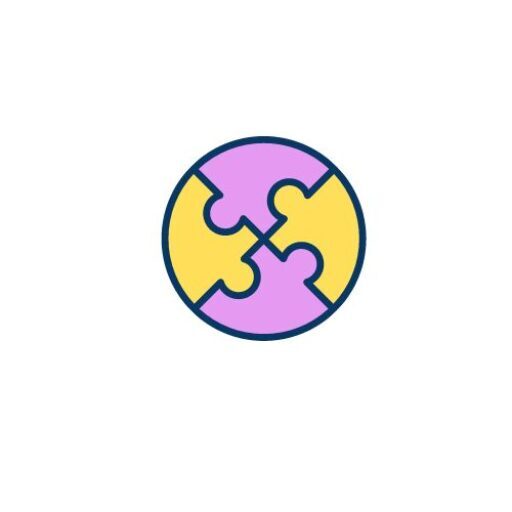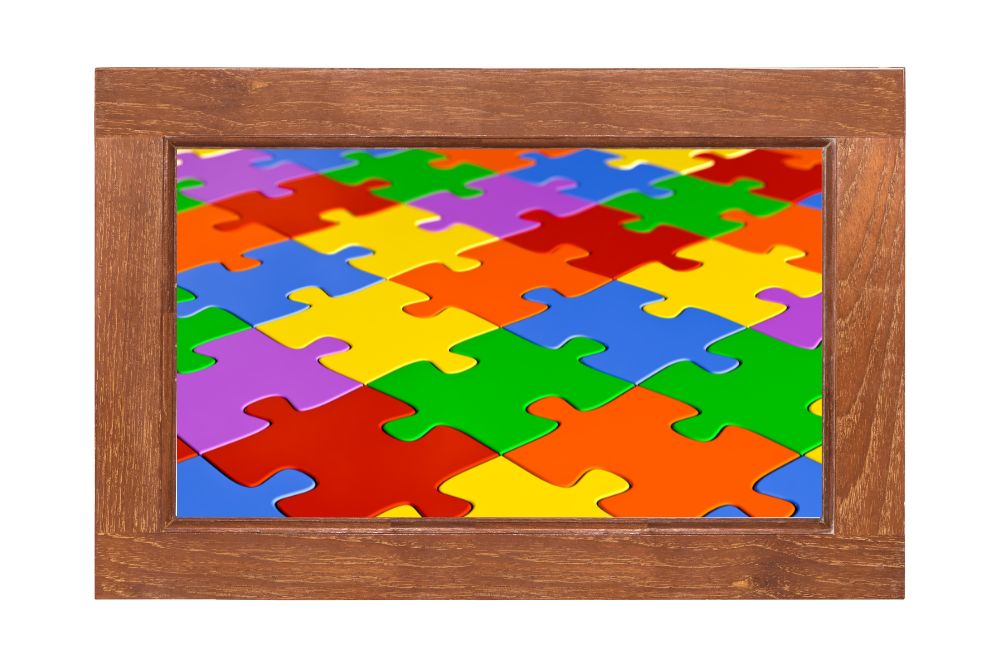Daily mood trackers are essential tools for helping kids and teens understand their emotions and gain insights into their mental well-being. A mood tracker journal encourages young people to consistently log their feelings, making it easier for them to identify patterns and triggers. By encouraging self-awareness and emotional intelligence, these journals promote healthier coping mechanisms and emotional growth.

An essential aspect of implementing daily mood trackers for young individuals is the focus on personalization and consistency. It is vital to create an approach that resonates with the child or teen while ensuring they commit to this habit. Integrating self-care activities into mood tracking can further assist in nurturing a balanced lifestyle.
Key Takeaways
- Daily mood tracker journals help kids and teens understand their emotions and improve self-awareness.
- The journals support identifying patterns and triggers, enabling better coping strategies and self-care practices.
- Consistency and personalization of mood tracking systems ensure effectiveness and foster emotional intelligence.
- Understanding Moods and Emotions

Moods and emotions play a significant role in children’s and teenagers’ mental health and well-being. Learning to understand and manage one’s feelings and emotions can greatly contribute to personal development and overall mental stability.
One way to better understand moods and emotions is to monitor them daily. A daily mood tracker journal can help young individuals to identify and express their feelings in a healthy and constructive manner. By keeping track of emotions regularly, they can become more self-aware and learn the correlation between their feelings, thoughts, and behaviors.
Mood is a prolonged, less intense emotional state that can affect an individual’s perception, responses, and overall performance. On the other hand, emotions are short-lived, intense reactions to specific stimuli from the environment. The relationship between mood and emotions is complex; certain emotions can impact one’s mood, which in turn can influence other emotions.
Mental health is crucial for young individuals, as it contributes to cognitive, emotional, and social development. Properly managing emotions can contribute to a more balanced state of mind, reducing the likelihood of issues such as anxiety, depression, or low self-esteem.
Some common factors that can affect a young person’s mood and emotions include:
- Sleep quality and duration
- Diet and nutrition
- Physical activity and exercise
- Social interactions
- Academic performance
- Family relationships
A daily mood tracker journal can include various features to assist in tracking and understanding feelings and emotions:
- Mood Rating Scale: A scale ranging from “very sad” to “very happy” allows the individual to rate their mood on a daily basis.
- Emotion Identification: A list of emotions (e.g., happy, sad, angry, anxious) to select from, helping to recognize specific feelings experienced throughout the day.
- Possible Triggers: A section to note events, situations, or thoughts that may have contributed to the individual’s current mood and emotions.
- Coping Strategies: A place to record healthy ways to deal with emotions and improve mood, such as deep breathing, journaling, or engaging in a favorite activity.
By consistently using a daily mood tracker journal, children and teens can develop the skill of understanding their moods and emotions. This, in turn, can enhance their mental health, promoting better overall well-being, and helping them navigate the challenges of life with more confidence and clarity.
The Basics of Daily Mood Tracking

What Is a Mood Tracker?
A mood tracker is a tool that helps individuals record their emotional states at regular intervals. This can be done using a physical mood chart, an online app, or a mood tracking journal specifically designed for children and teens. Mood charts can be as straightforward as a printed emotions chart, or as interactive as a digital application, such as the iMoodJournal or Mood Diary.
Benefits of Mood Tracking
Mood tracking offers several noteworthy advantages for children, teenagers, and their families:
Improves emotional awareness: By regularly tracking moods, kids and teens can develop a better understanding of their emotions and recognize patterns.
Promotes self-reflection: Mood tracking encourages individuals to reflect on their feelings and the factors that may be influencing their emotional states.
Supports mental health: In some cases, mood tracking can be helpful for those with mental health conditions, such as depression, to identify triggers and work on coping strategies.
Enhances communication: By providing a space for children and teenagers to express their emotions, mood tracking can improve communication between parents, teachers, and the individuals themselves.
Boosts problem-solving: Identifying emotional patterns can lead to positive changes in behavior and decision-making, helping individuals better navigate their feelings.
Integrating mood tracking into a child or teenager’s daily routine can have lasting positive effects on their emotional well-being. By using a mood tracker, such as a mood chart or journal, individuals can gain valuable information on their emotions and work towards a healthier and happier mindset.
Setting Up Mood Trackers for Youth

Helping kids and teens to understand and process their emotions is an essential part of their emotional development. A daily mood tracker journal can be a powerful tool that assists them in recognizing patterns and identifying triggers. In this section, we’ll discuss how to set up age-appropriate mood trackers and effectively utilize color-coding legends.
Age-Appropriate Design
When designing a mood tracker journal for kids or teens, it’s imperative to consider their ages, developmental stages, and interests. For younger children, you may want to use more engaging designs that incorporate attractive visuals, such as cute illustrations, fun themes, or familiar characters. On the other hand, for teens, opt for more sophisticated designs that still resonate with them and align with their aesthetic preferences.
Recently I created a special journal to track moods. You can find it on Amazon appropriately called MOOD TRACKER JOURNAL FOR KIDS AND TEENS. You will find this tracker to helps to promote a daily track of various triggers and helps with self-reflection activities.

Color Code and Legend Usage
Incorporating a color code system and legend is beneficial for mood trackers, as it allows for concise, visual representation of emotions. Setting up a color code is quite simple. First, assign a specific color to each emotion, such as:
| Emotion | Color |
|---|---|
| Happy | Yellow |
| Sad | Blue |
| Angry | Red |
| Anxious | Green |
Once the colors are designated, create a legend that explains their meanings. Place this legend prominently within the journal to make it easy for the child or teen to reference. Encourage them to use the color code consistently, as it develops the habit of noticing patterns and connections between their emotions and daily events.
Moreover, incorporating the use of a legend is essential to ensure consistency in interpretation, especially when evaluating progress or sharing the journal with a parent, teacher, or mental health professional. Clear color code usage alongside a comprehensible legend can make it easier for kids and teens to communicate their emotions and track their mood changes effectively.
Identifying Patterns and Triggers

Keeping a daily mood tracker journal for kids and teens is essential to help them recognize the patterns and triggers of their mood changes. By consistently logging their emotions, they can start to identify trends and understand what is causing their mood swings.
Using a mood tracking journal allows kids and teens to associate their moods with specific events or external factors. For example, they can mark on their journal any significant occurrence, like an argument with a friend or a challenging task, and how it affected their mood. This process encourages self-awareness and enables them to cope better with their emotions.
To effectively identify patterns, they must track their mood regularly. A brief daily log is an excellent starting point, but it’s also beneficial to look at the gathered data over time by comparing:
- Weekly patterns: Consistently checking their mood during every day of the week may reveal that certain days tend to trigger mood changes.
- Monthly patterns: Analysing their mood at a larger time-scale, like month to month, can uncover long-term patterns that may be less obvious on a daily basis.
Furthermore, it’s crucial to help them understand the factors that may cause mood swings. These can be classified into two main categories:
- Internal factors (biological):
- Hormonal changes
- Sleep patterns
- Diet and nutrition
- Health conditions
- External factors (environmental):
- Social interactions
- Academic or work-related stress
- Family dynamics
- Extracurricular activities and hobbies
By recognizing these triggers, kids and teens can develop coping strategies to mitigate the impact of such factors on their mood. This proactive approach can lead to improved emotional regulation, increased self-esteem, and a more balanced life. The Mastering Mood Tracking guide is a valuable resource to help them along this journey.
In conclusion, a daily mood tracker journal empowers kids and teens to identify patterns in their mood changes and understand their triggers. Regular tracking and thoughtful analysis of both internal and external factors can significantly enhance emotional wellbeing, leading to a more stable and content life.
Journaling as a Coping Mechanism
Journaling has been proven to be an effective coping mechanism for managing emotions, especially in children and teens. By writing down their thoughts and feelings, young people can gain a better understanding of their emotions and improve their overall mental health.
One of the main benefits of journaling is its ability to help manage stress and anxiety. As individuals write about their experiences and emotions, they can identify patterns or triggers that lead to increased stress levels. Developing a daily mood tracker journal allows them to track these patterns over time, ultimately helping them reduce anxiety and stress levels (NAMI).
Journaling can also be an effective method for coping with depression. Writing down emotions and thoughts allows for a release of pent-up feelings, which can help lift the weight of depressive emotions. In addition, journaling promotes self-awareness and reflection, helping individuals better understand the root causes of their depressive symptoms (Stanford Children’s Health).
Implementing a daily mood tracker journal for kids and teens encourages the development of healthy coping skills. These skills not only assist in managing stress, anxiety, and depression, but also promote personal growth and self-expression. Journaling can improve self-esteem, as individuals can look back on their progress and celebrate their accomplishments.
Some ways to make journaling engaging and effective for kids and teens include:
- Using a variety of writing prompts to encourage self-exploration
- Encouraging the use of both lists and narratives to explore emotions
- Suggesting the inclusion of related drawings or doodles to express feelings visually
- Incorporating a rating system to track daily mood levels
In conclusion, journaling, particularly through the use of a daily mood tracker journal, can act as a powerful coping mechanism for children and teens. By regularly writing about their emotions and experiences, young people can effectively manage stress, anxiety, and depression while fostering personal growth, self-awareness, and overall well-being.
Integrating Self-Care into Mood Tracking
Mood tracking is an essential tool for kids and teens to monitor their emotions and better understand their mental well-being. Integrating self-care practices into the mood tracking process can significantly enhance the benefits of this tool.
Incorporating Exercise and Diet
One way to effectively combine self-care with mood tracking is by incorporating exercise and diet into the routine. A regular exercise regimen and a balanced diet can positively impact a child’s mood and overall well-being. To do this, encourage kids and teens to log their physical activities and meals, noting any changes in energy levels and mood following certain activities or foods. Consider using bullet points or tables to keep records organized, like this:
- Activity: Yoga
- Duration: 30 minutes
- Mood Change: Increased relaxation and focus
- Food: Spinach salad
- Portion: 1 cup
- Mood Change: Satisfied and energized
The Role of Sleep and Rest
Sleep and rest also play a crucial role in mood regulation for kids and teens. It is essential to track sleep duration and quality alongside daily mood to identify patterns and correlations between sleep and emotional well-being. Integrate sleep tracking into the mood tracker by creating a dedicated section or table to record sleep data, such as:
| Night | Sleep Duration | Sleep Quality | Mood upon Waking |
|---|---|---|---|
| 1 | 8 hours | Good | Happy |
| 2 | 7 hours | Average | Tired |
In addition to tracking hours of sleep, encourage kids and teens to participate in relaxation activities, such as meditation or journaling about gratitude, to help unwind before bedtime. Including these practices in the daily mood tracker can provide valuable insights into the impact of relaxation on mental health. By integrating self-care activities like exercise, diet, and sleep into a daily mood tracking routine, kids and teens can develop healthy habits that positively influence their emotional well-being.
Advancing Emotional Intelligence Through Tracking
Daily mood tracker journals for kids and teens provide the opportunity to advance emotional intelligence through the simple act of recording their feelings. By doing so, these journals enable young people to better manage, analyze, and understand their emotional states, ultimately enhancing their self-awareness and emotional well-being.
One of the key aspects of emotional intelligence is the ability to both recognize and label one’s own emotions. With Daily Mood Tracker Journal for Kids children can develop these abilities by logging their emotions daily, thereby building a solid foundation for emotional regulation and empathy.
Journals usually offer a structured environment for identifying emotions through various formats such as:
- Emoji-based rating scales
- Open-ended questions
- Prompts for self-expression in writing or drawing
These tools encourage a safer, tangible space for children to explore their emotions honestly while also developing self-reflection skills. Moreover, by tracking their moods over time, children can become more aware of patterns and triggers for their emotional states which empowers them to proactively manage their emotions.
To summarize, daily mood tracker journals play a crucial role in fostering emotional intelligence in kids and teens. These journals provide an engaging platform for young people to regularly log their emotions, reflect on patterns, and develop essential skills in emotional regulation and empathy. With a variety of formats available, parents and educators have numerous options to support children in their emotional intelligence journeys.
Personalization and Consistency
A daily mood tracker journal for kids and teens can be incredibly beneficial in helping them understand and manage their emotions. One key aspect to consider when choosing or designing a mood tracker is personalization. By incorporating elements that appeal to the individual, the journal can become a more engaging and enjoyable tool for them to use. For example, gratitude prompts, goal-setting sections, or keeping a Mood Chart for Kids can make the activity more interesting, personal, and relevant to the user.
There are numerous ways to personalize a mood tracker journal, such as allowing children to choose their favorite colors or providing templates that resonate with a specific age group. Adding customizable categories like sleep, exercise, or social interactions can also offer further personalization options. By experimenting with these features, children and teens can create a journal that caters to their unique needs, preferences, and emotional growth.
Consistency is another essential aspect of maintaining a daily mood tracker journal. Encouraging children to input their feelings and experiences on a daily basis can help form a habit of emotional self-awareness. This consistency is significant, as it allows for a more accurate and meaningful analysis of patterns in emotional trends over time. To further promote frequent journaling, children might find it helpful to set a specific time each day to update their entries or to follow a simple routine that involves both personal reflection and mood tracking.
Incorporating habit trackers alongside mood journals can go a long way in promoting consistency and self-awareness. Habit trackers can monitor daily activities such as exercise, mindfulness practices, or social time with friends and family. By including these elements in one place, children and teens can observe how their habits impact their emotional well-being.
In conclusion, personalization and consistency play vital roles in the effectiveness of a daily mood tracker journal for kids and teens. By combining these elements, children and adolescents can better understand their emotional patterns and develop healthier habits, leading to improved emotional well-being in their daily lives.
Daily Mood Tracker Journal
A daily mood tracker journal is an excellent tool for kids and teens to explore their emotions, foster creativity, and connect with their feelings. One such journal available on Amazon allows children and teens to monitor their mood and understand the patterns behind their emotions.
The journal features daily prompts that encourage youngsters to express their emotions in a safe and creative manner. By assessing their day-to-day feelings, kids develop a better understanding of how specific events or experiences influence their emotional well-being.
Some of the benefits of using a mood tracker journal include:
- Self-awareness: Children become more conscious of their emotions and learn to identify patterns in their mood fluctuations.
- Emotional regulation: By understanding the triggers behind their emotions, kids can develop strategies to manage their feelings effectively.
- Communication skills: Tracking emotions through writing harnesses the ability to express themselves more effectively to others.
- Empathy: As children develop emotional awareness of themselves, they also become more understanding and accepting of others’ emotions.
- Problem-solving: By exploring situations that impact their mood, children can learn to develop solutions and make positive changes.
Through these benefits, daily mood tracker journals can play an essential role in nurturing emotional intelligence and mental well-being among children and teens. So, considering such journals can be a wise investment for their emotional growth and development.





